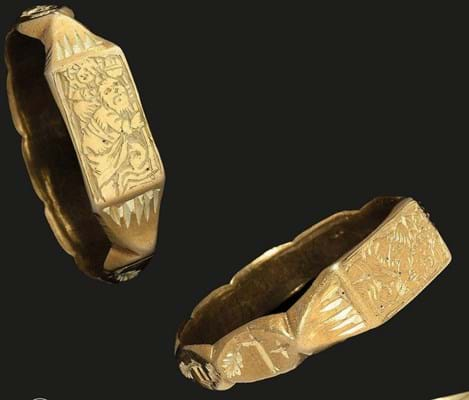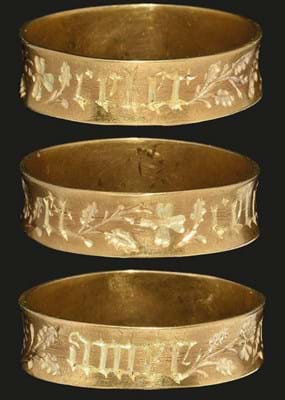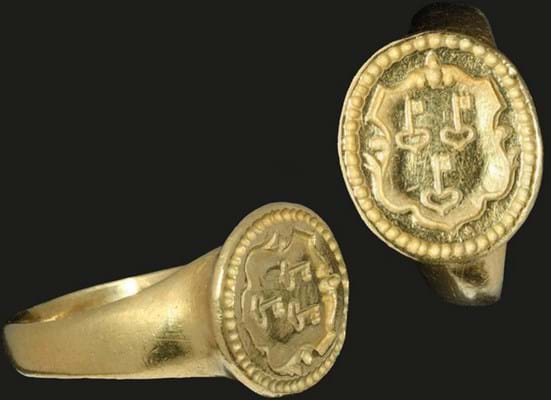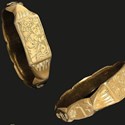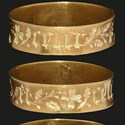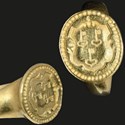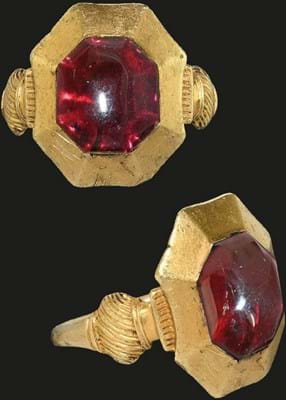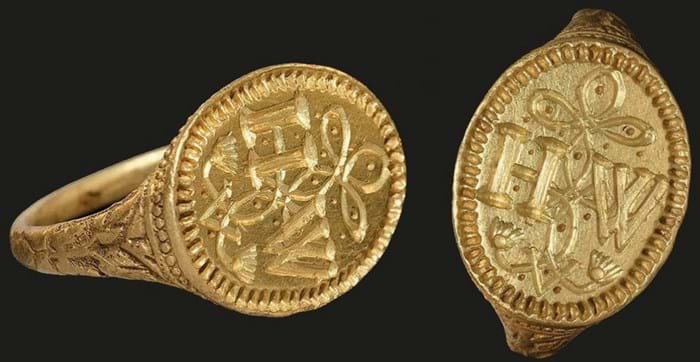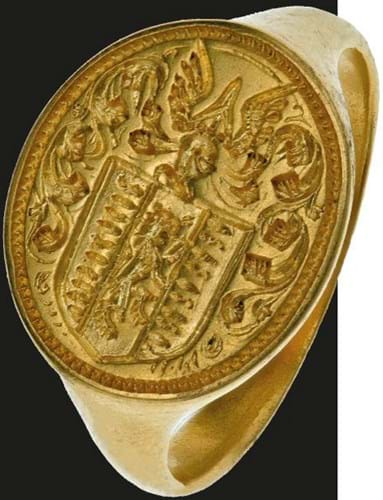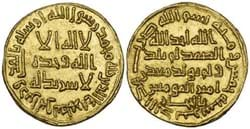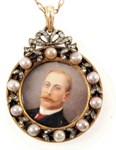Some time in the late medieval or early Tudor period a sorrowful event befell two lovers in the Trent Valley.
Perhaps one of the couple had died or their secret tryst had been discovered and cruelly ended. In an act of grief, two gold rings were wedged together and deposited in the ground.
One was an iconographic ring with a depiction of St Christopher carrying the Christ child of a type popular from 1400-1550, the other a posy ring engraved with three sprays of flowers and the legend of French courtly love Amer et Celer (Love and Conceal that Love).
They were only found again (one still tucked inside the other) in July 2015, close to the village of East Bridgford in Nottinghamshire. The rings were offered, as separate lots, in the September 3 TimeLine (25% buyer’s premium inc VAT) auction in London.
The St Christopher ring took £18,000 (estimate £3000-4000) while the posy ring brought £8000 (estimate £2000-3000). Will, after centuries entwined, they stay together? Happily, lots 579 and 580 did sell to the same bidder.
Rings that have a recorded find spot, and thus the possibility of strong narrative, will typically sell better than ‘orphans’ with no fixed abode.
Spectacular find
Sold at £19,000 (estimate £6000-8000) was a spectacular gold finger ring c.1250-1350 mounted with a skilfully shaped octagonal garnet. It was found in the early 1990s in the Kingswood area of Hull – a modern housing development and retail space that, as the name suggests, was once a mixture of open marshland and woodland reserved for game.
The ring is contemporary with the formative years of the city (then the hamlet of Wyke on the river Hull) and its acquisition from the local Cistercian community by Edward I in 1293.
It would have been a costly day at the office when this ring slipped from the figure of a member of the royal hunting party. It had last appeared for sale in September 2008 when it was bought by the vendor at Beverley auction house Hawleys.
Occasionally it is possible to suggest with a degree of certainty to whom a ring once belonged.
Also sold at £19,000, this time against expectations of £4000-6000, was a late Elizabethan or early Jacobean ring bearing the arms of the Harvey family – important landholders in the Tarrant valley area of Dorset. That it was found in Launceston (in 2014) and carries the initials HW suggest it was the personal seal ring of one of two William Harveys mentioned in the local parish records.
Gold and jewelled objects seldom survive the vicissitudes of family fortunes. So the market and the museum community have the metal detectorists to thank for most extant early jewellery.
Leading the sale of Jewellery, Watches and Objects of Vertu at Dix Noonan Webb (plus 24% buyers premium) in London on September 10 was an armorial ring c.1640-60. The finder from Blackpool, Michelle Vall, who took up metal detecting just over two years ago, dug it up last November at Ducks Bay on the shores of Loch Lomond. The state declined to purchase it.
DNW identified the crest as that of the Colman family – Lavenham cloth traders who lived at Brent Eleigh, Suffolk – and also spotted an engraved I, perhaps indicating that the wearer had been a Jesuit. It is thought to have belonged to Edward Colman, a Catholic convert and close confident of James, Duke of York (the future James II) and Mary of Modena. Implicated in the web of hysteria that was the Popish Plot, he was found guilty of treason and hung, drawn and quartered – an act for which he was later beatified by Pope Pius XI.
Estimated to bring in the region of £10,000, it sold to an American private collector at £14,000.


